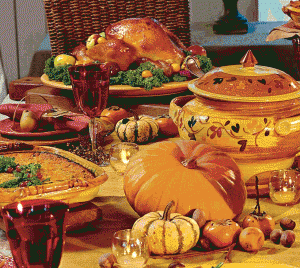
Since then, in the United States, the celebrations took place on the same date, the fourth Thursday of November, until in 1863 President Abraham Lincoln declared it a national holiday.
Like any well-established tradition, it is passed from generation to generation until today, keeping the spirit of the first pilgrims: the deep gratitude to God for the harvest of the year.
And with the rigor customary of traditions, the Thanksgiving dinner should contain the typical delights of this celebration: baked (or in modern practice, occasionally fried) turkey with pumpkin pie, cranberry sauce, apple pie, mashed potatoes with the one-of-a-kind gravy prepared with the juices from the bird.
Also today, there are hundreds of incredible parades to commemorate this day, some of the most important organizers of these events are Macy’s, McDonald’s, and UBS.
A Thanksgiving is also celebrated in Canada, officially since 1957, but on another date, the second Monday in October.
And since Canada is a bilingual country, everything is expressed in English and French, for example, “Thanksgiving Day” in the French community in Canada is “le Jour de l’Action de Grâce”.
But as we saw in several articles, cultures transcend political boundaries … and Thanksgiving will be celebrated anywhere in the world where there is a heir to the tradition of the first settlers.
And once again, our intention is that is it not always sufficient to convey the mere translation of the word, but the spirit hidden in the words must also be expressed. This spirit remains alive from generation to generation throughout history.
(Spanish version: https://www.trustedtranslations.com/thanksgiving-day-2010-11-24.html)
